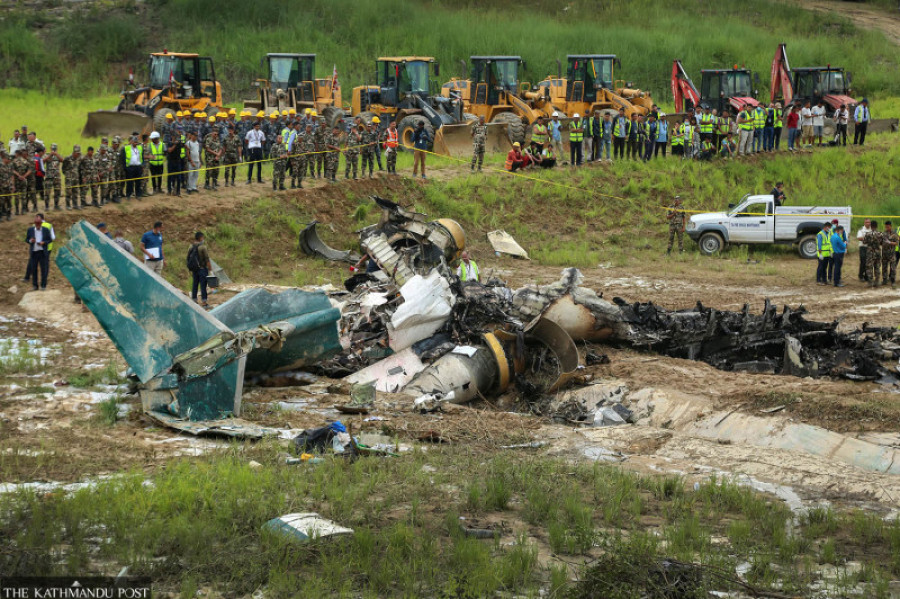Editorial
Aerial death traps
No corrupt leader or bureaucrat should be allowed to stop the bifurcation of the CAAN.
The Civil Aviation Authority of Nepal (CAAN) has its feet in two boats: Business and regulation. This is always a recipe for disaster. And in Nepal’s aviation sector, disasters are aplenty. Under the current director general, Pradeep Adhikari, Nepal has seen seven air crashes. In the past year-and-a-half alone, over 100 people have been killed in plane crashes. And no, the director-general hasn’t resigned yet, he in fact continues to vehemently defend his sullied record. The terms ‘accountability’ and ‘humility’ are clearly missing from his book of ethics. With the right connections across the political spectrum, he has no moral or political pressure to resign. The half-mast national flag does his task of hanging his head in shame.
A European Union Aviation Safety Agency (EASA) delegation that conducted an on-site assessment of Nepal’s air safety last September pointed out several safety concerns, clearly mentioning a couple of airline carriers and CAAN as the offending parties. An assessment report submitted to CAAN’s Adhikari raised concerns about discrepancies in the work of the Flight Operations Division and the Airworthiness Inspection Division. It noted significant gaps in overseeing fatigue related to duty period regulations and ensuring comprehensive compliance checks. The report also suggested improvement in CAAN’s oversight capabilities, personnel management, staff training and certification processes.
How the CAAN has responded to the European Commission’s concerns about Nepal’s air safety over the years is there for all to see: More crashes and more killings. The commission’s request to bifurcate the civil aviation body into regulatory and service-providing institutions has fallen on deaf ears. Similarly, the International Civil Aviation Organisation, the United Nations aviation watchdog, asked Nepal to split the civil aviation body and ensure a proper regulatory system two years ago. Not splitting the CAAN has created a serious conflict of interest as the same institution seeks to provide service as well as to make profit. However, Adhikari kept the report a secret, continuing to stall efforts to split CAAN.
A poignant case of regulation failure was evident in the death of the wife and son of a technician who were among the 18 individuals killed in the Saurya Air crash near the runway of the Tribhuvan International Airport in Kathmandu on Wednesday. The ferry flight to Pokhara on a full maintenance mission was not supposed to carry common passengers, but it did—an egregious violation of air safety rules. As corruption and lack of accountability run rampant in Nepal’s aviation industry, with little adherence to existing regulations, air travel continues to be a risky endeavour.
The captain of the ill-fated Bombardier CRJ200, who miraculously survived the crash, has made an initial statement that he could not control the aircraft after it took an altitude of a hundred feet after take-off. He would be in a position to provide more insight into the events leading up to the fatal crash of the aircraft when he regains his health. In Nepal, there has been a tradition of putting all the blame on human agency, meaning the captain, after all fatal air crashes, without making any effort to strengthen air safety regulations. No corrupt leader or bureaucrat should be allowed to perennially stop the bifurcation of CAAN and to continue to let our skies be aerial death traps.




 9.12°C Kathmandu
9.12°C Kathmandu














